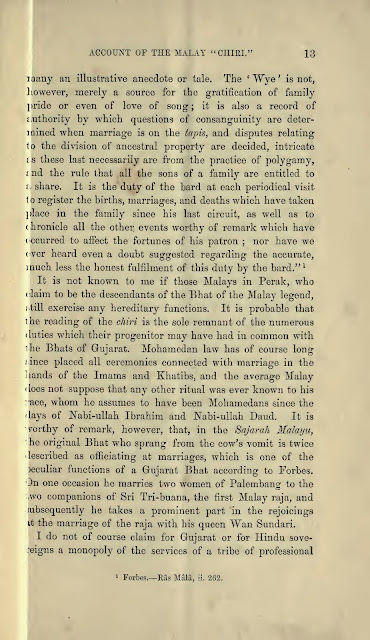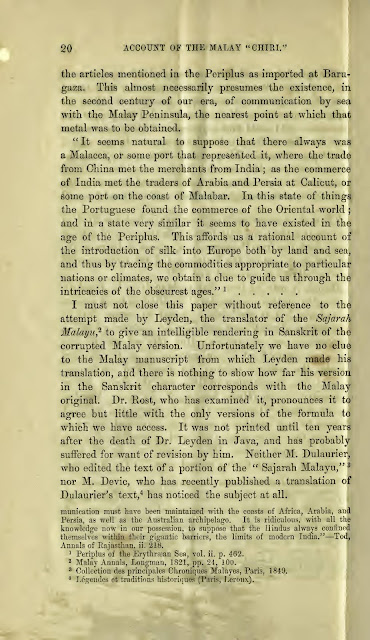 |
| Whispering the royal secret into the ears of the ruler. |
Many people in Malaysia are now talking about the Perak coronation. The Perak royal family still follows an ancient legacy. There are many elements of Hinduism and Animism in it.
Back in January 1881, W.E Maxwell of the Colonial Civil Service (British Malaya) published a journal about the Perak coronation. It is called as a Chiri. A Chiri is actually a coronation address and it contains Sanskrit words.
R.O. Winstedt and R.J. Wilkinson have also written about the Perak coronation and its Hindu influence in their book A History of Perak which was first published in June 1934.
The following is taken from The Straits Times, 2 March 1939, Page 4
 |
It will be best to read it with an open mind. Keep in mind that although there could be elements of Hinduism, the Perak royal family of today have embraced Islam. They are no longer Hindus.
As a Hindu Malaysian, I pray that the Almighty Mahadeva Shiva bless the new ruler of Perak and his loyal subjects.
DAULAT TUANKU!!!

.jpg)






























